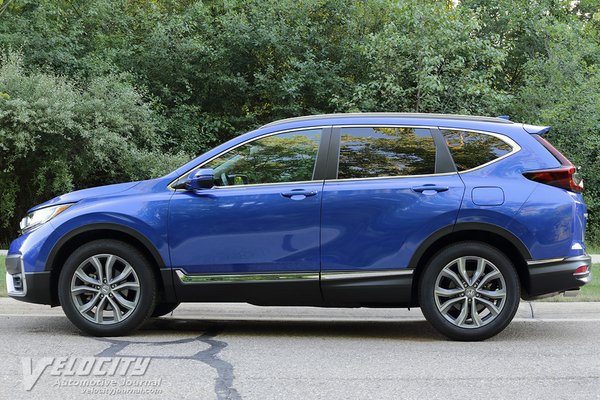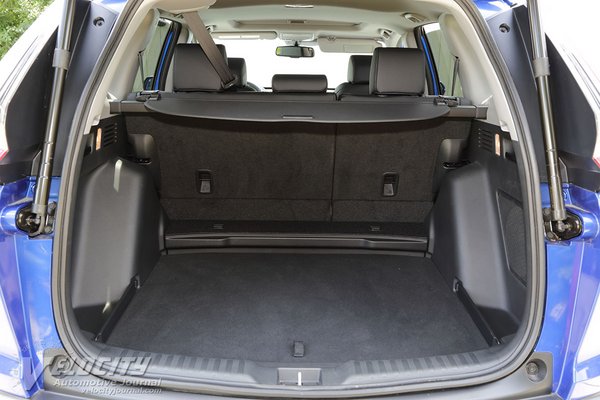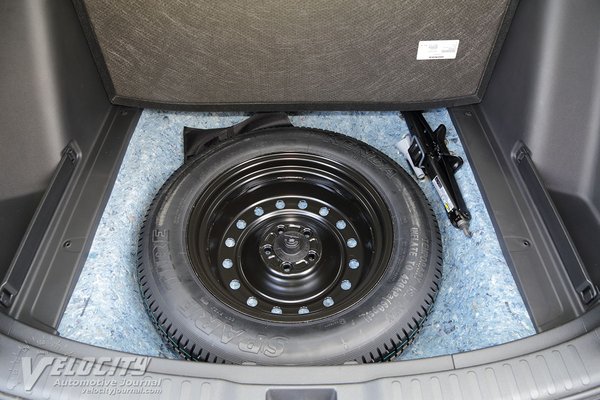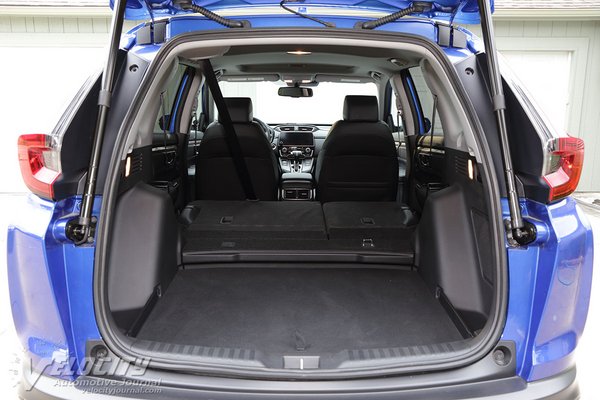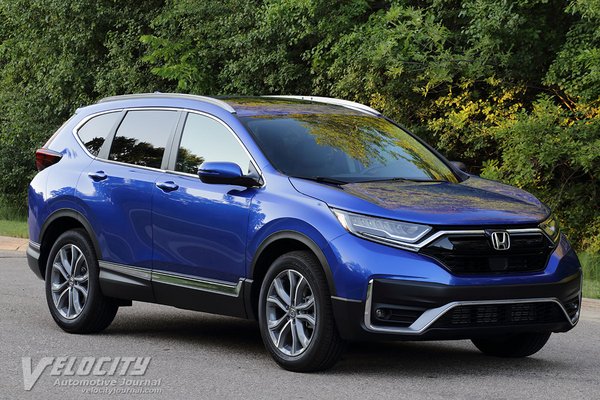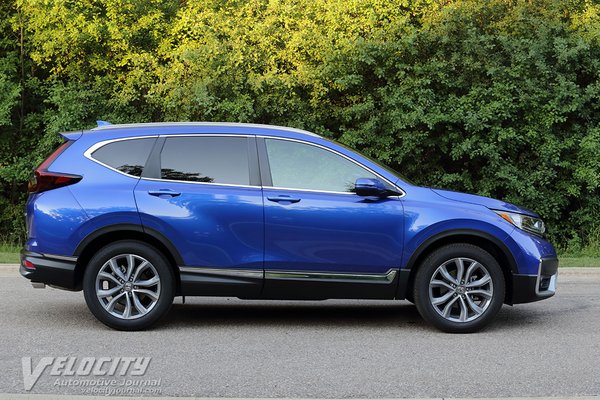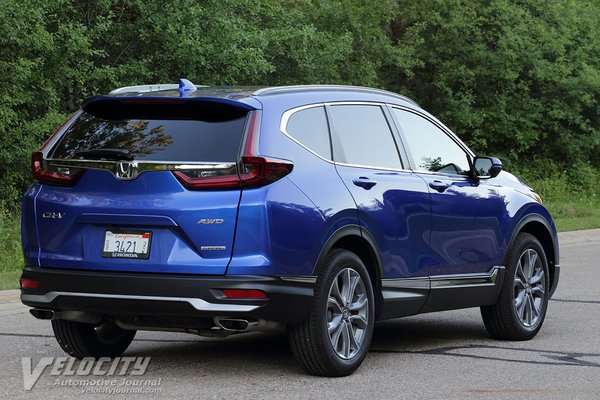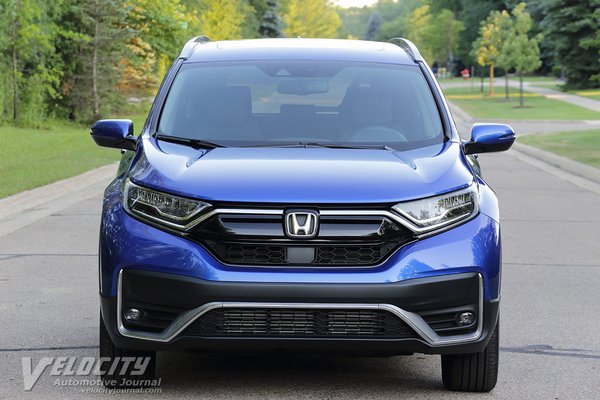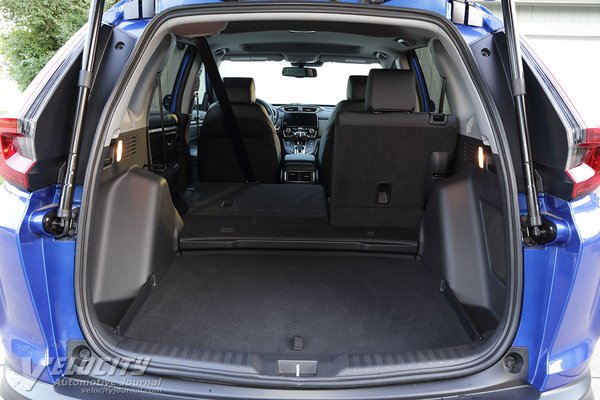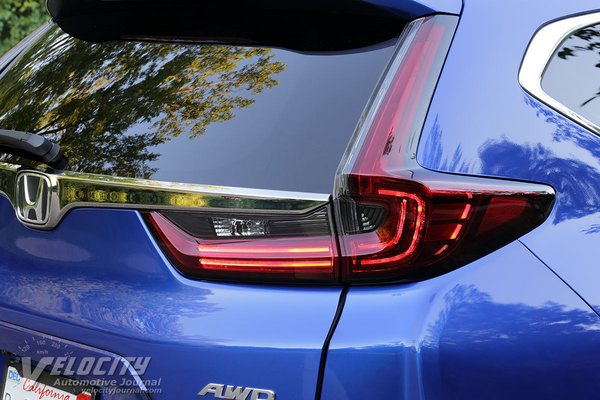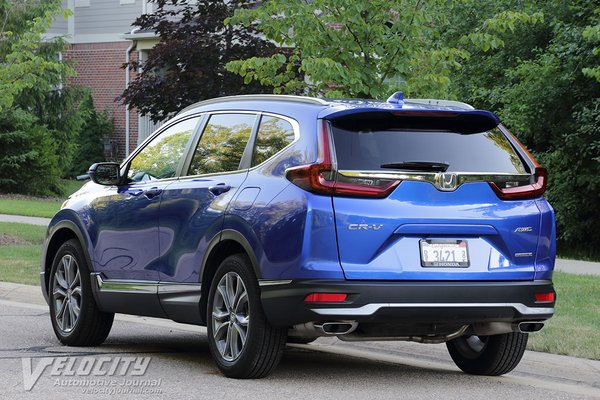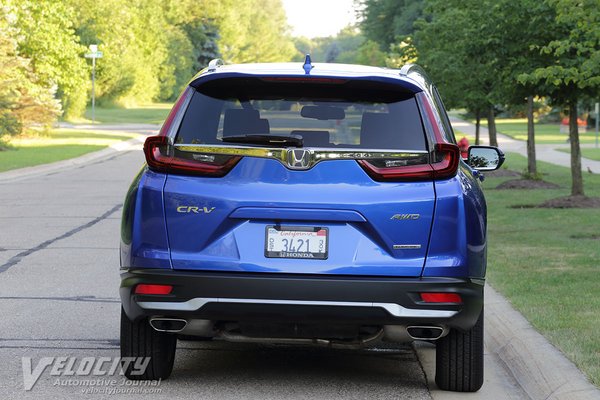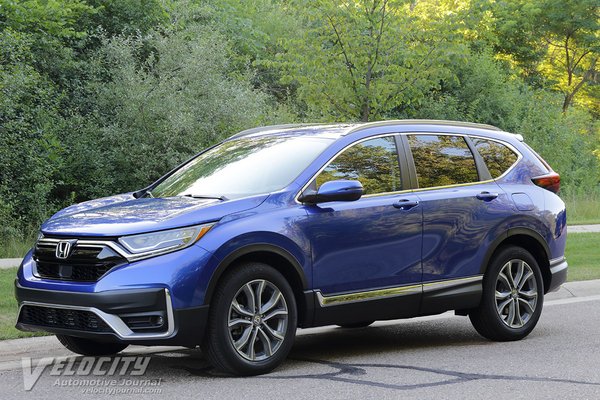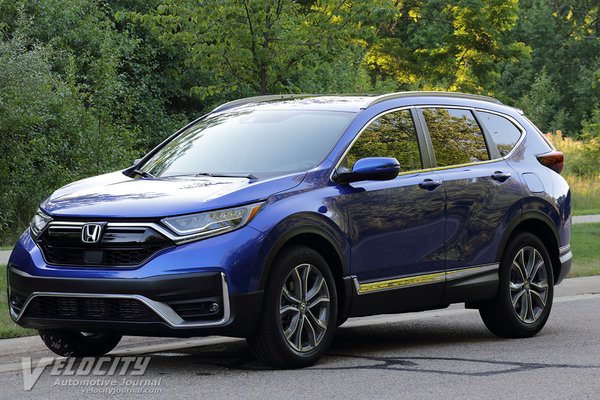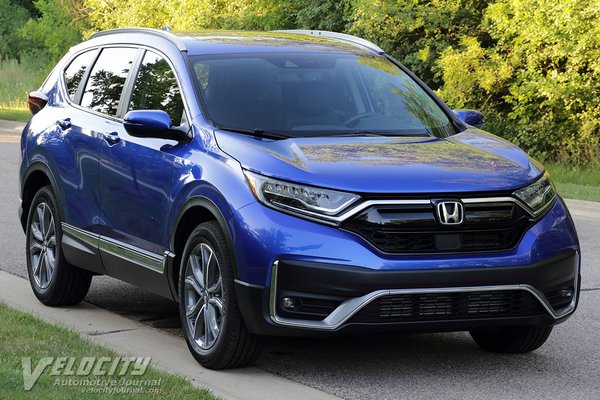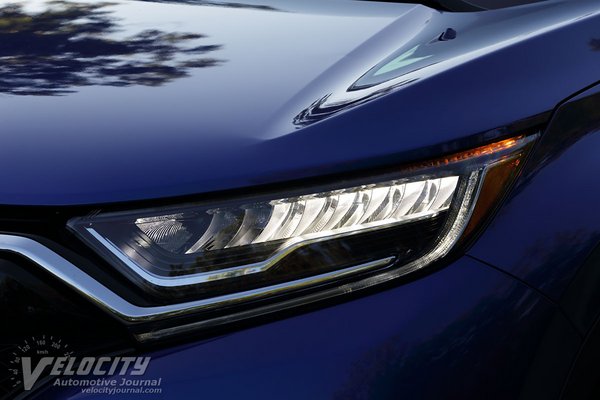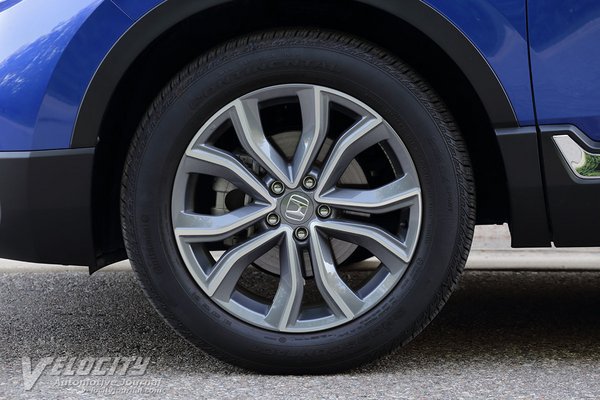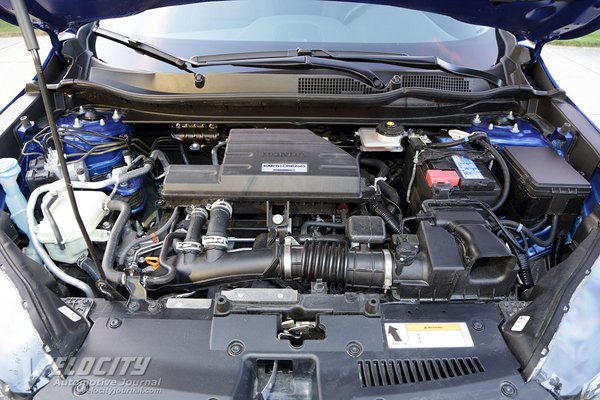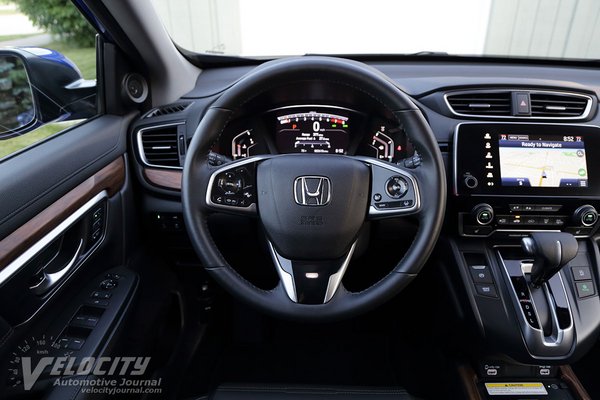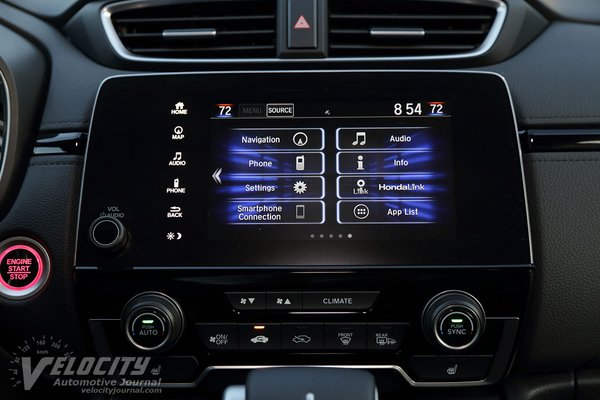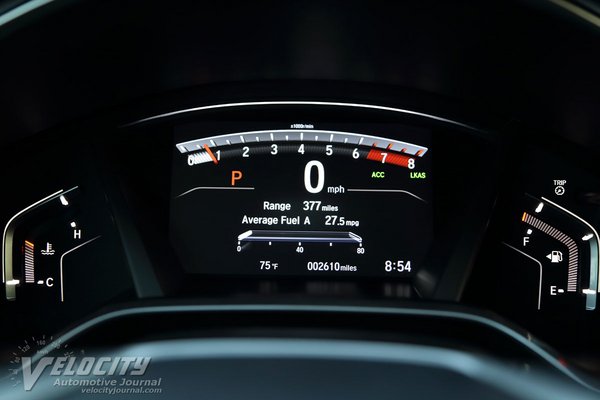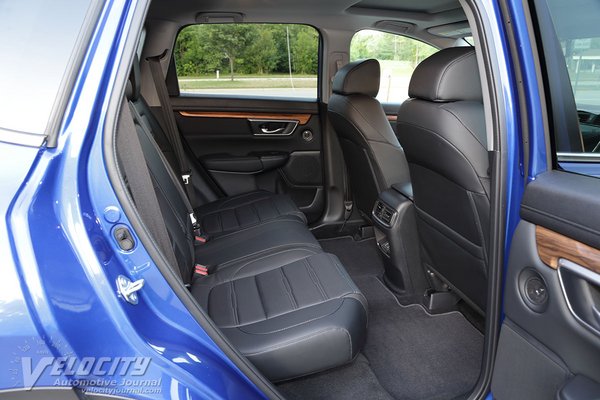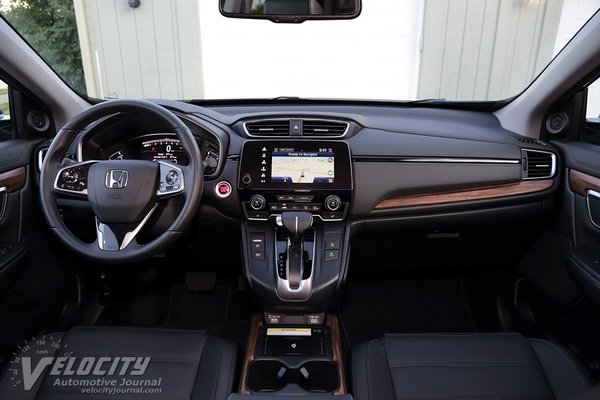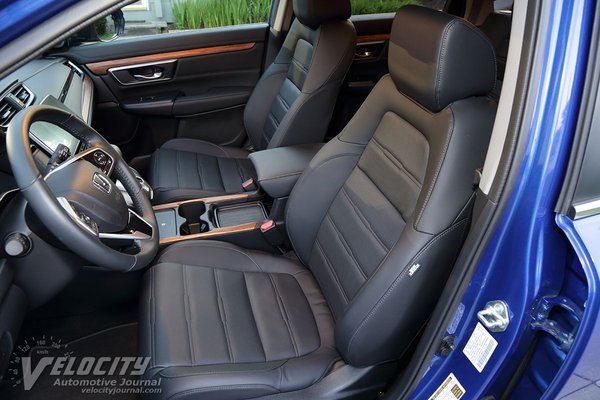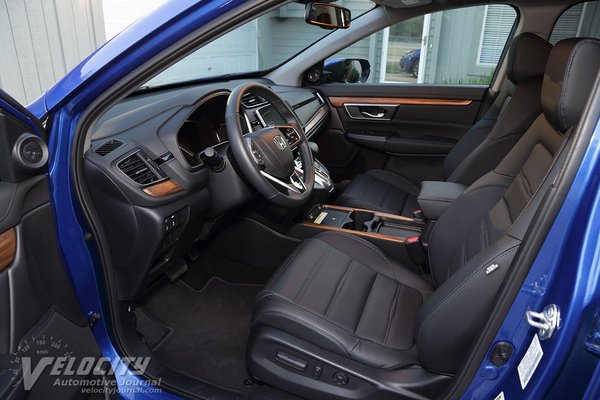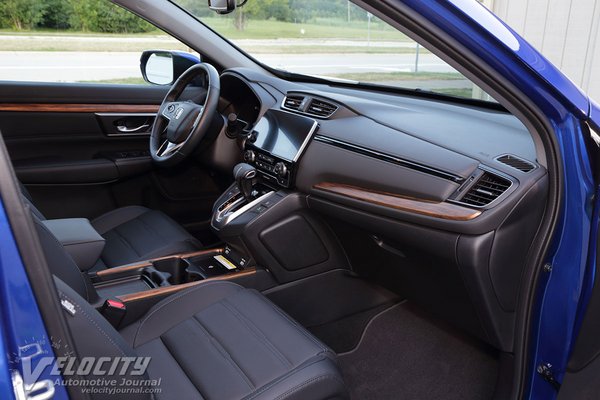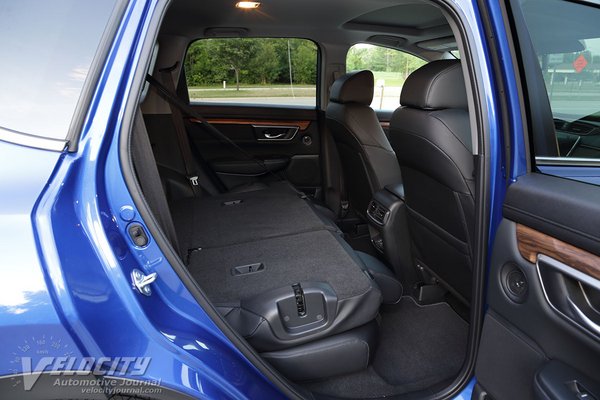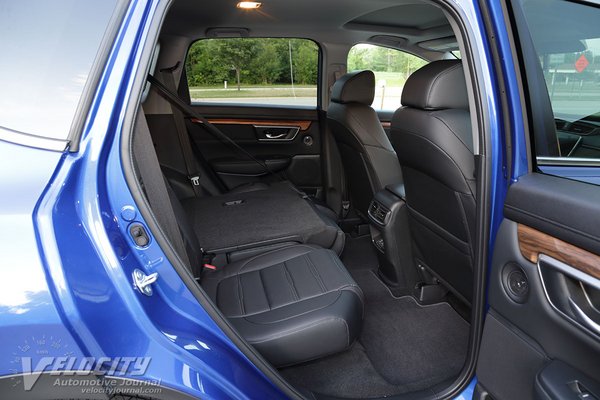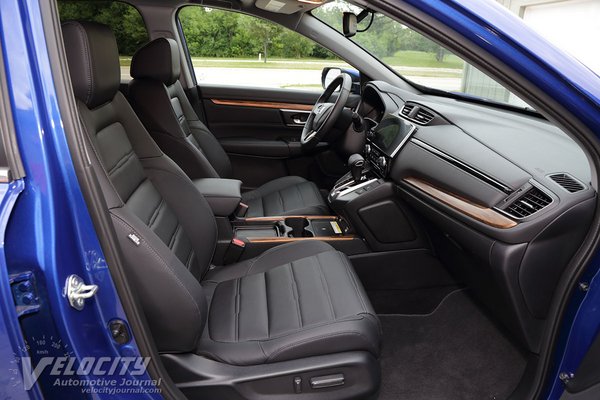2020 Honda CR-V Touring AWD
08/05/2020
Shahed Hussain
After over 20 years of continuous refinement by Honda, CR-V sales have ascended to become one of the segment leaders. In the Honda SUV lineup, the CR-V slots above the entry-level HR-V, and below the Passport. Notable competitors include the Toyota RAV4, Ford Escape, Chevrolet Equinox, Subaru Forester, Mazda CX-5 and Nissan Rogue.
Honda sells the CR-V in four trim levels for both gasoline and hybrid models. The gasoline-powered lineup pricing starts with the LX ($25,150), followed by the EX ($27,660), EX-L ($30,150) and Touring ($33,350). All-wheel drive (AWD) is a $1500 option on all models. We tested the top Touring AWD with no options. The total including the $1,120 destination fee added up the $35,970. Significant standard equipment includes 19-in. dia. alloy wheels, LED headlights & LED foglights, moonroof, power tailgate, leather-wrapped steering and shift knob, HomeLink Remote System, heated leather seats (front), heated steering wheel, 7-in. infotainment display, 12-way power driver's seat with 4-way lumbar support, 4-way power passenger seat, 330-watt audio system with 8-speakers and subwoofer, satellite navigation system, Apple CarPlay & Android Auto, and Qi wireless phone charging. The CR-V offers a suite of active safety technologies (Honda Sensing): adaptive cruise control (ACC), stability control (VSA), blind spot information system (BLIS, lane keeping assist (LKAS), collision mitigation braking system (CMBS), forward collision warning (FCW), front/rear parking sensors, and rearview camera.
Engine options consist of two inline fours: a 1.5L turbo (non-hybrid) or a normally-aspirated 2.0L (hybrid). The direct-injected DOHC 1.5L is rated at 190-hp @ 5600 RPM; torque output is 179 lb.-ft. from 2000-5000 RPM. Despite the 18.5 PSI maximum turbo boost, the compression ratio is a relatively high 10.3:1. Mated to the 1.5L is a CVT (Continuously Variable Transmission). The CVT ratio range is 2.655-0.405:1 and is coupled to a 5.64:1 final drive ratio, driving all four wheels. The AWD system shifts power from the front to rear wheels depending on driving conditions. An automatic start/stop system turns off the engine at stoplights for increased efficiency. Fuel consumption is rated at 27/32 MPG (city/hwy.) for AWD models. Opting for 2WD improves fuel consumption to 28/34 MPG (city/hwy.). We averaged around 28 MPG in mixed urban and highway driving.
Honda designed the CR-V front suspension with MacPherson front struts and a tubular stabilizer bar. At the rear is a multi-link double wishbone suspension with a solid stabilizer bar. Steering is via a motor-assisted rack-and-pinion system with 2.3 turns lock-to-lock. The Touring model has 19-in. dia. alloy wheels and Continental CrossContact LX Sport 235/55R19 all-season tires. Other CR-V models get 17-in. or 18-in. dia. alloy wheels. Brakes are all-disc with power-assist. Curb weight ranges from 3337 lbs. (LX 2WD) to 3569 lbs. (Touring AWD). Towing rating is 1500 lbs. for all non-Hybrid models.
Inside the CR-V, the designers focused on a clean layout with easily accessible controls and switchgear. Interior materials and build quality are superior to most other mainstream compact SUVs. Simulated wood on the dash, center console and door panels warm up the predominantly black and matte silver interior colors. Opting for the base LX model replaces the faux wood with silver trim instead.
The instrument cluster consists of an arced bar tachometer, digital speedometer, vehicle status display plus bar graph fuel and coolant temperature gauges. Integrated within the steering wheel spokes are controls for phone, cruise, audio, and vehicle status. Honda's infotainment system relies on the 7 in. touchscreen to access most functions. A rotary volume knob is a concession to usability. Changing radio or satellite stations via the touchscreen can be distracting while driving, but volume and seek functions are duplicated on the steering wheel. Rotary knobs and buttons on the center stack control temperature and ventilation settings. The transmission shift lever is elevated above the center console for easier access. Drivers can disable the engine stop-start system via a button on the center console next to the transmission shift lever. Dual USB ports and a 12V power outlet in center console bin supply power for portable electronics. A Qi wireless charging pad enables cord-free smartphone recharging. Dual cupholders are conveniently located on the center console.
Both the driver and front passenger will appreciate the exceptionally comfortable perforated leather seats. We prefer more lateral support, but most CR-V customers should be satisfied. Front headroom is acceptable for occupants up to 6' tall. Rear passengers get ample legroom and headroom for up to 6' tall occupants. The rear seats recline slightly for added comfort, and will fold down nearly flat for maximum cargo capacity.
Honda's suspension engineers targeted ride comfort as a priority over sharp handling, so springs and dampers are tuned to absorb potholes and isolate occupants from patched pavement. Around curves, significant body roll and moderate understeer confirms that sporty handling is not a high priority. For CR-V customers, this is an acceptable trade-off in return for superb ride quality. The all-disc brakes deliver acceptable braking performance with progressive pedal actuation and low pedal effort. The steering is communicative and transmits road surface textures accurately. Moderate assist combined with the variable ratio steering rack enables low speed maneuverability along with decent stability on the highway.
As is common in many recent vehicles, a stop-start system turns the engine off at stoplights. Although the system is fairly unobtrusive, we preferred to disable it when driving. Small-displacement turbo engines often suffer from excessive turbo lag and weak low-RPM throttle response. Honda programmed the CVT to "downshift" and deliver acceptable acceleration until the turbo spools up to deliver more power and torque. At part throttle acceleration, the typical CVT drone invades the cabin as engine RPM varies between 2000-3000 RPM. However, at full throttle the CVT "shifts" like a conventional automatic by revving the engine to 6000 RPM and then dropping revs to 5000 RPM. Honda tuned the turbocharger to flatten the torque curve, so low and midrange RPM throttle response is robust. Torque steer during full throttle acceleration is nonexistent, as the AWD system transfers power to the rear wheels. Above 70 MPH, acceleration is tepid, as aerodynamic drag takes its toll. Engine, wind and tire noise are appropriately subdued at highway cruising between 70-80 MPH.
In the affordable compact SUV segment, the CR-V shines as one of the benchmarks in its class. Honda's steady improvements over the years have earned many loyal customers. Among the CR-V models, the EX or EX-L are probably the best values in the model range, delivering decent equipment levels at a reasonable price. Anyone in the market for an affordable compact SUV should include the CR-V on their list.

